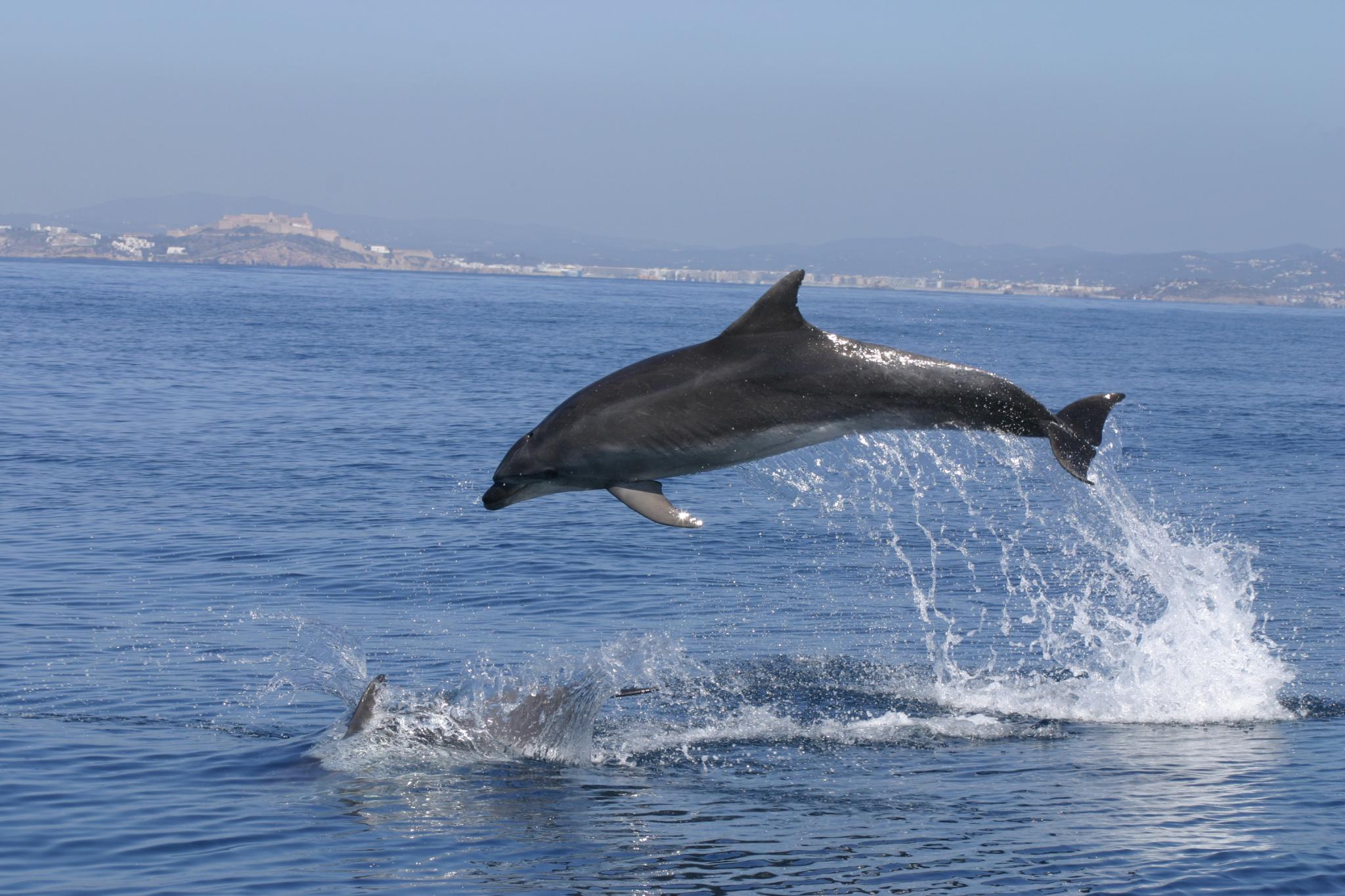How does underwater noise affect dolphins? The Tursiops association tells us in this article. Tursiops – latin name for bottlenose dolphin – is a small Balearic based organisation which has been researching marine mammals in the Balearic waters for more than 20 years. Their goal: to generate knowledge to improve the conservation status of dolphins and whales in the Balearic Islands. Tursiops’ rigorous research methods has allowed it to earn the respect of the scientific community in the Balearics, Spain and beyond. Marilles has been supporting Tursiops since 2018 on a variety of projects to help improve conservation status of dolphins and sperm whales in the Balearic Islands.
Bottlenose dolphins communicate, live and feed through acoustics, how does underwater noise affect them? can they lead “happy lives” with the large number of vessels sailing the Balearic Islands, or does their noise adversely affect them?

The Our Dolphins aims to study if and how underwater noise affects the behavior and distribution of the bottlenose dolphin in Ibiza and Formentera, one of the “noisiest” spots of the Mediterranean. The project started in 2018 with the installation of three underwater hydrophones in three areas with different levels of boating pressure: the Es Freus area connecting Ibiza and Formentera (high pressure), the Illots de Ponent (medium) and Na Xamena (low). First results show that dolphins occurrence is higher in winter than in the summer and that their presence in these areas is higher when noise levels are lower and vice-versa.
These findings have pushed Tursiops to further expand this research. In 2020 the project is growing and building on two scientifically proven premises: 1) there is a resident population of bottlenose dolphins in the Pitiusa Islands, 2) each bottlenose dolphin has a unique whistle-signature with which it can be identified. This will allow the project to estimate how many resident bottlenose dolphins inhabit the Ibiza-Formentera waters, what is their spatial distribution and the influence that noise plays in their behaviour.
In order to do this, the network of hydrophone network will be enlarged so that it covers the entire Ibiza and Formentera archipelago and putting the local dolphin population under “noise surveillance”.

The acoustic files generated by hydrophones provides information to quantify and characterize the type of noise, and the number and frequency of bottlenose dolphin in the area. The whistle signature for each dolphin will be isolated, to estimate the exact number of dolphins present in the area and how they move around the Pitiusas islands. This information will be particularly helpful to develop effective management plans for Special Protection Areas designated under the EU habitats directive to protect this species amongst many others.
Installing more hydrophones and for longer time will provide more and better information. At the moment there are six operating hydrophones but with more financial support, Tursiops will be able to install “more ears” under the water and strengthen the quality of the results.

In addition to Marilles Foundation, the Our Dolphins project counts with the support of Fundacion Biodiversidad, Fundacion Sa Nostra, , the Local Councils of San José, San Antonio and Ibiza, Es Nàutic de San Antonio, Ibiza Preservation Fund, THB Hotels and Seven Pines Ressort, among others.
For more information: www.asociaciontursiops.org





No comments
To be able to write a comment, you have to be registered and logged in
Currently there are no comments.